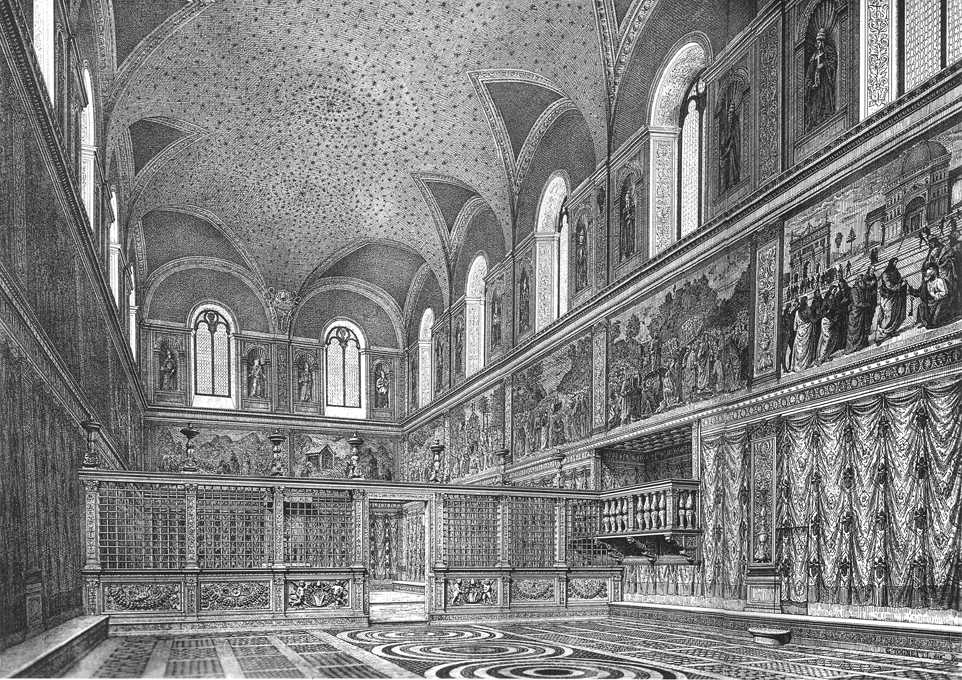On April 21st 2025, the remarkable Pope Francis, known as “the Pope of the people” passed away due to his illness. As people paid their respect to the late Pope and his body is laid rest, now the focus has shifted to who will be his successor.
The famous conclave will be held on May 7th, in the only place where they would do it for 700 hundred years, the historic and amazing Sistine Chapel.
Commissioned by Pope Sixtus IV

Some of you may be wondering where did the chapel get its iconic name. Well, that’s because this chapel was commissioned by Pope Sixtus IV. In Italian, “Sixtus” would be “Sisto” and that’s why the chapel is named “Cappella Sistina” in Italian.
But the building itself was not totally brand new. It was built over an existing chapel called Cappella Magna. Architect Giovanni dei Dolci was tasked on overseeing the construction process. He built the chapel following the proportions of the Solomon’s Temple from the Old Testament which is about 40.9 meters long, 14 meters wide, and 20.7 meters high.
Popes’ Personal Chapel

From the start, the Sistine Chapel was intended to serve as the pope's private chapel and a venue for important papal ceremonies, including masses and official functions. Over time, it also became the designated location for the conclave specially after the formalization of conclave procedures in the 13th century.
Though the architecture of the chapel is relatively plain from the outside, it’s the interior that would make you jaw drop. Initially, the walls were decorated by some of the most celebrated artists of the late 15th century, including Sandro Botticelli, Domenico Ghirlandaio, Pietro Perugino, and Cosimo Rosselli.
They painted two parallel fresco cycles: one depicting the Life of Moses on the south wall and the other the Life of Christ on the north wall. These were meant to emphasize the continuity between the Old and New Testaments, as well as the authority of the Pope as the successor of Saint Peter and Jesus’ representative on Earth.
Then, Michelangelo Came

However, it is Michelangelo Buonarroti’s contribution that truly transformed the Sistine Chapel into a masterpiece of Renaissance art. In 1508, Pope Julius II commissioned Michelangelo to paint the chapel’s ceiling, which had been a simple blue sky with stars.
Despite Michelangelo’s reluctance, because he considered himself as a sculptor and not a painter, he accepted and began the work that would take four years (1508–1512) to complete.
The ceiling frescoes are now world-famous and depict scenes from the Book of Genesis. This includes the iconic Creation of Adam, where God reaches out to touch the fingertip of Adam.
Decades later, Michelangelo returned to the chapel to paint The Last Judgment on the altar wall at the request of Pope Clement VII and later Pope Paul III which was completed in 1541.
However, this dramatic and controversial fresco shows Christ judging souls, with the saved ascending to Heaven and the damned being dragged to Hell. The work stirred debate due to its intense emotional style and the nudity of its figures, which was later partially censored.
Over the centuries, the chapel has undergone various restorations, most notably in the 1980s and 1990s, when layers of soot and grime were removed to reveal the original vibrant colors of Michelangelo’s work.
Today, the Sistine Chapel is not only a working place of worship and a center of papal activity, but also a major tourist destination, drawing millions of visitors each year who come to marvel at its artistic splendor and spiritual significance.



















